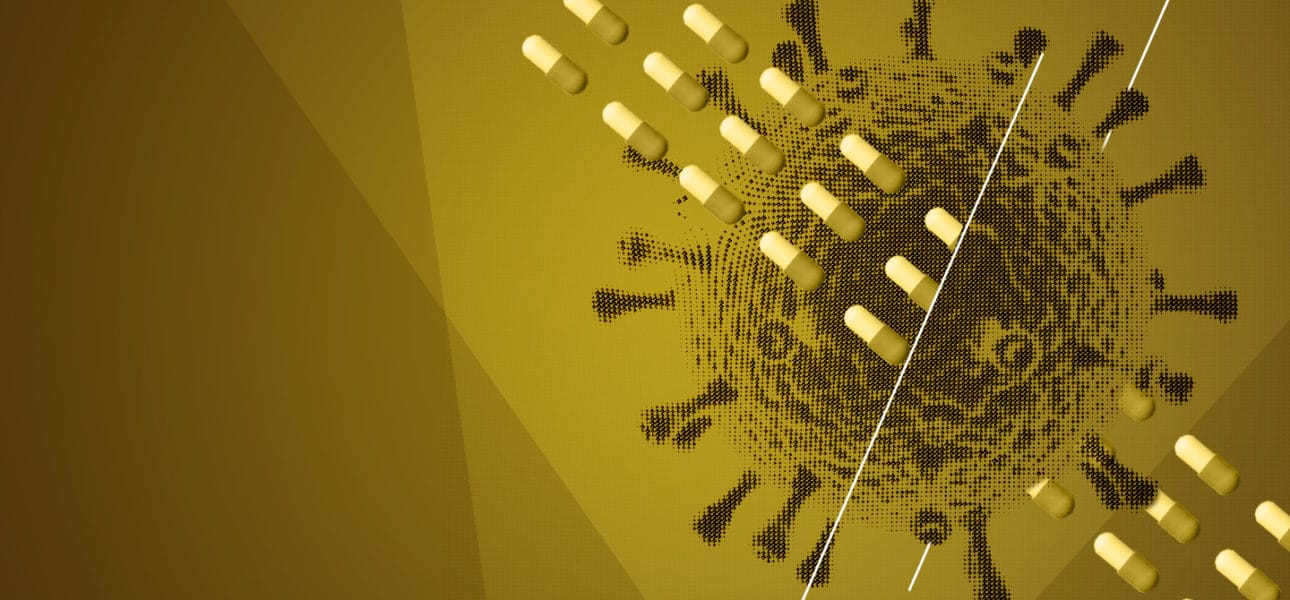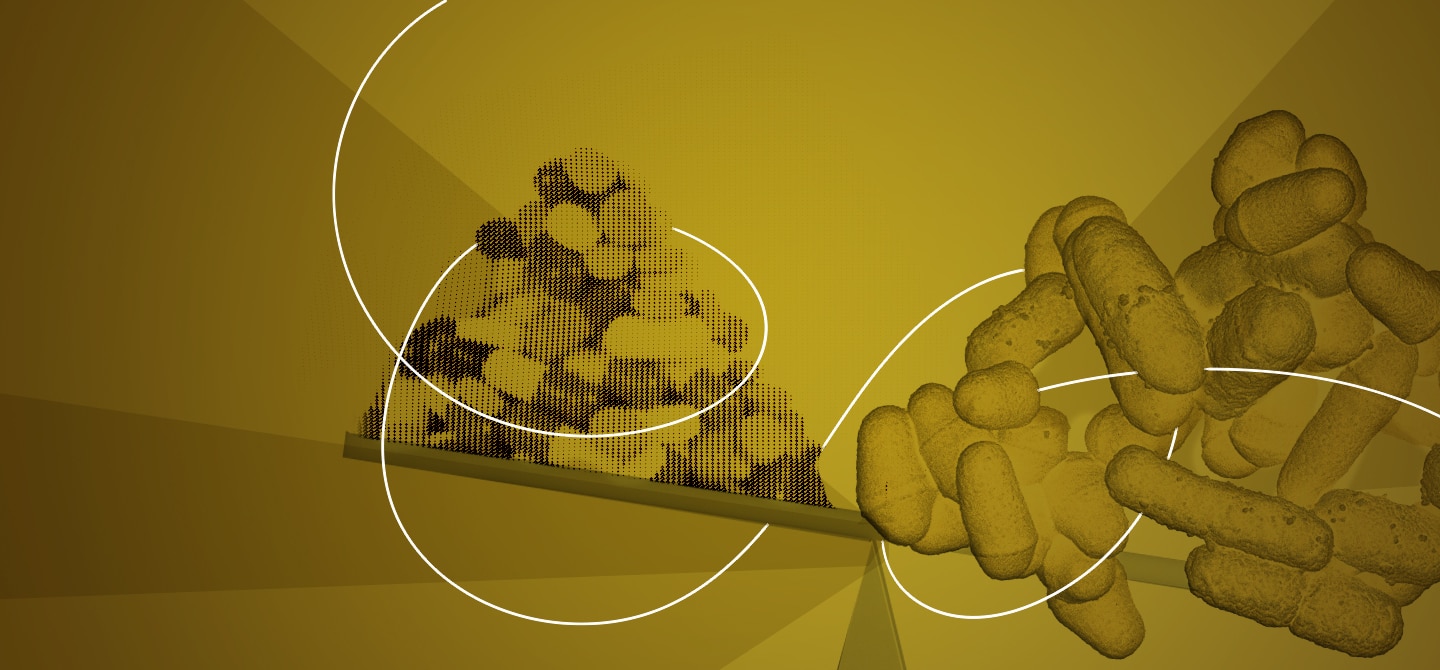Antibiotic resistance is a complex problem. It occurs when a bacterium survives a dose of antibiotics that would normally kill it. This concept is thus directly linked to the way in which the antibiotic molecule acts on the micro-organism and therefore to how the micro-organisms can protect themselves. There is a wide variety of bacteria that are potentially pathogenic to humans and animals, and many different antibiotic molecules. Understanding their interactions, both at the level of a cell and at the level of a population of cells, is essential for understanding antibiotic resistance.
Molecular shields
There are two types of resistance: intrinsic and acquired. The first applies, for example, to bacteria whose very structure forms a protective layer against a toxic molecule. Take, for example, vancomycin, an antibiotic that is effective against Staphylococcus aureus or enterococci, which are gram-positive bacteria. But for Escherichia coli or Pseudomonas aeruginosa, which are gram-negative, this antibiotic does not reach its target. These bacteria are so-called because they have a double membrane that prevents the penetration of the stain developed by the Danish bacteriologist Hans Christian Gram and thus certain antibiotics. The target of vancomycin is indeed located between these two membranes. Other molecules capable of crossing the outermost membrane, such as antibiotics of the penicillin family, must therefore be used against these types of bacteria.
It is acquired antibiotic resistance that explains the crisis we are currently experiencing. It concerns micro-organisms that were previously sensitive to a molecule to treat an infection and no longer are. Bacteria have two ways of learning to protect themselves from a toxic molecule. As they divide, they can accumulate mutations which, by altering the target of the antibiotic or preventing it from entering the cell, render it ineffective.
The second way of acquiring resistance relies on mobile genetic elements, i.e. pieces of DNA that can move from one cell to another. These are usually plasmids, circular, auxiliary mini-chromosomes that bacteria exchange, even between different species. These plasmids are formidable from the point of view of antibiotic resistance because they can carry several genes for resistance to different classes of antibiotics. A bacterium can thus become multi-resistant by the simple acquisition of such a plasmid.
Bacterial ecology
Plasmids, and the resistance genes they carry, are also responsible for much of the antibiotic resistance of the commensal bacteria of our digestive system. These bacteria can receive plasmids containing resistance genes from bacteria in their environment that are less well adapted to the gut ecosystem. Resistance will thus spread among the microbiota, constituting a “silent reserve” with clinical consequences that have yet to be evaluated.
The action of an antibiotic depends on the living conditions of a bacterium, which sometimes complicates the interpretation of laboratory diagnoses. A bacterium may be sensitive to an antibiotic in a petri dish, but resistant in the patient, or vice versa. The action of the treatment and the response of the bacteria vary according to the environment; they will not be identical in blood, urine or laboratory conditions. Furthermore, the antibiotic alone can rarely eliminate an infection-causing bacterium because it works with the patient’s immune response. Work, such as our Seq2Diag project, aims to integrate these parameters to improve diagnosis.
The study of resistance also includes the population dynamics of bacteria. During an infection, a large number of bacterial cells in different environments are involved and not all are identical. Those that are able to survive the administered dose of an antiobiotic will take advantage of the space freed by the susceptible ones to multiply.
This struggle for space is at the very origin of some antibiotics and resistance genes. Many antibiotics, such as streptomycin, used to treat tuberculosis, have themselves been isolated from bacteria. Bacteria produce these molecules to protect their own space and to take over space from the sensitive bacteria with which they cohabit. Logically, a bacterium that synthesises an antibiotic is, in one way or another, resistant to that molecule. Antibiotics and resistance are natural phenomena in the dynamics of many bacteria.
Predicting resistance
One of the main questions facing scientists today concerns the appearance of resistance. Can it be predicted? The problem is complex and relies largely on monitoring circulating strains and analysing their genomes.
This involves compiling the genome sequences of bacteria considered to have an atypical resistance profile. When the resistance mechanism is not recognised in the genome, biologists will try to elucidate the process involved and reconstruct its evolutionary history. This information could theoretically help predict the emergence of new resistance. However, new mechanisms are rare and are now being detected more quickly. WHO’s GLASS network monitors antibiotic-resistant bacteria in low-income countries. As part of the Priority Research Plan, the Commissariat aux investissements d’avenir is funding the development of a database of bacterial genomes linked to antibiotic resistance. This tool, called ABRomics, will bring together, in a single structure, all the frequent and rare resistances identified in France and will allow to monitor their progress in real time. Such national databases are deployed in various countries. They help to predict the spread of strains that are difficult to treat.








